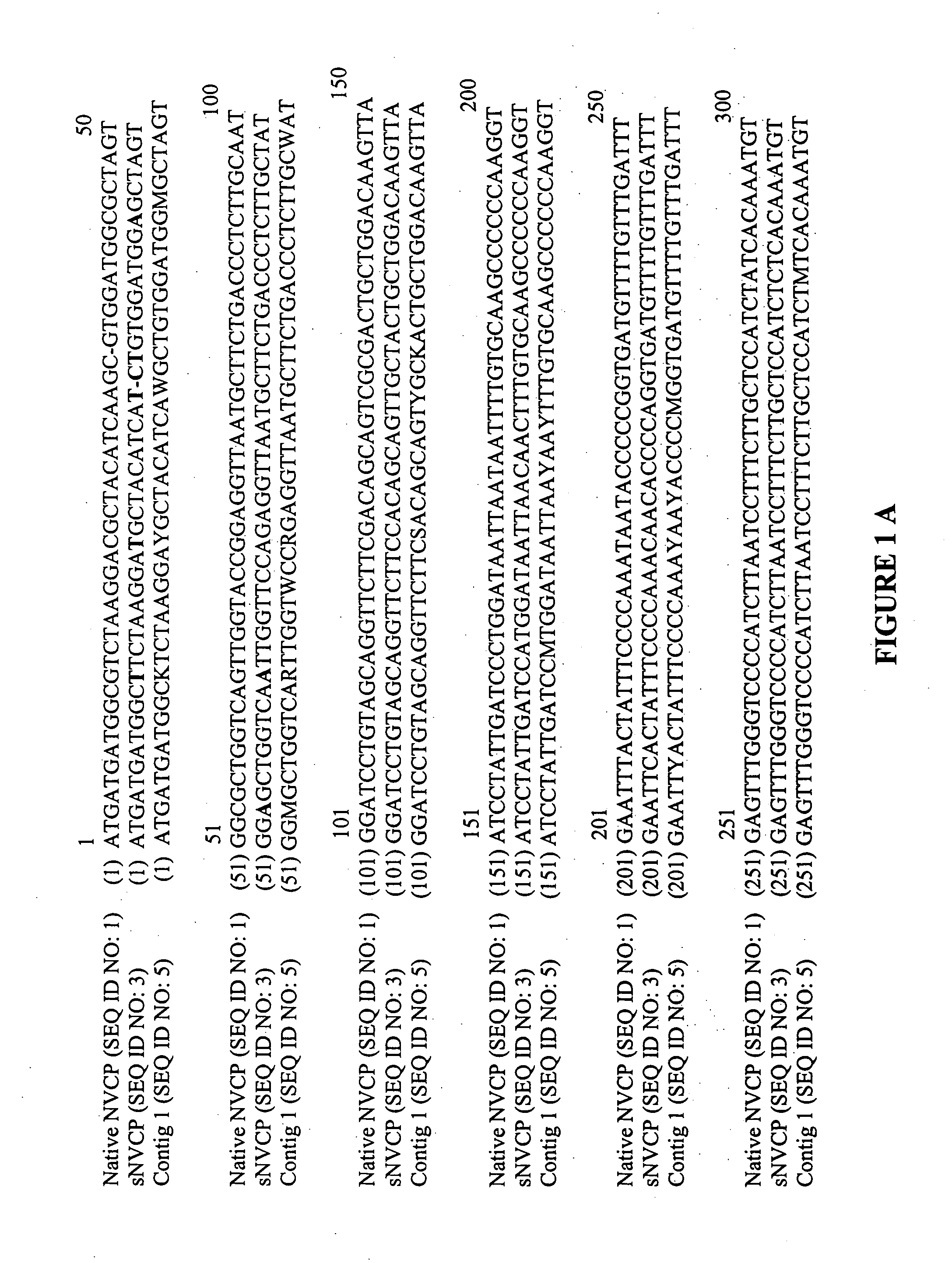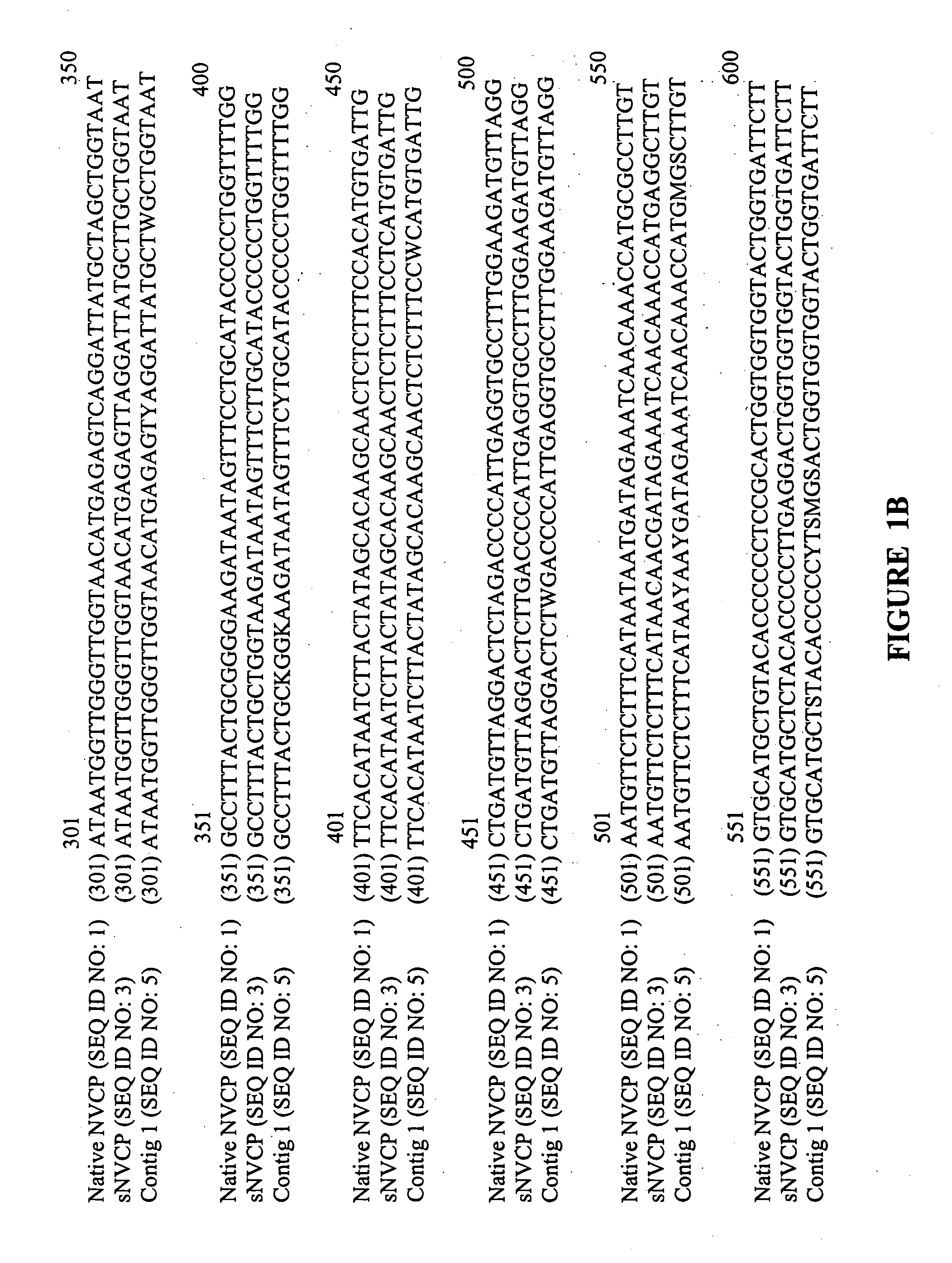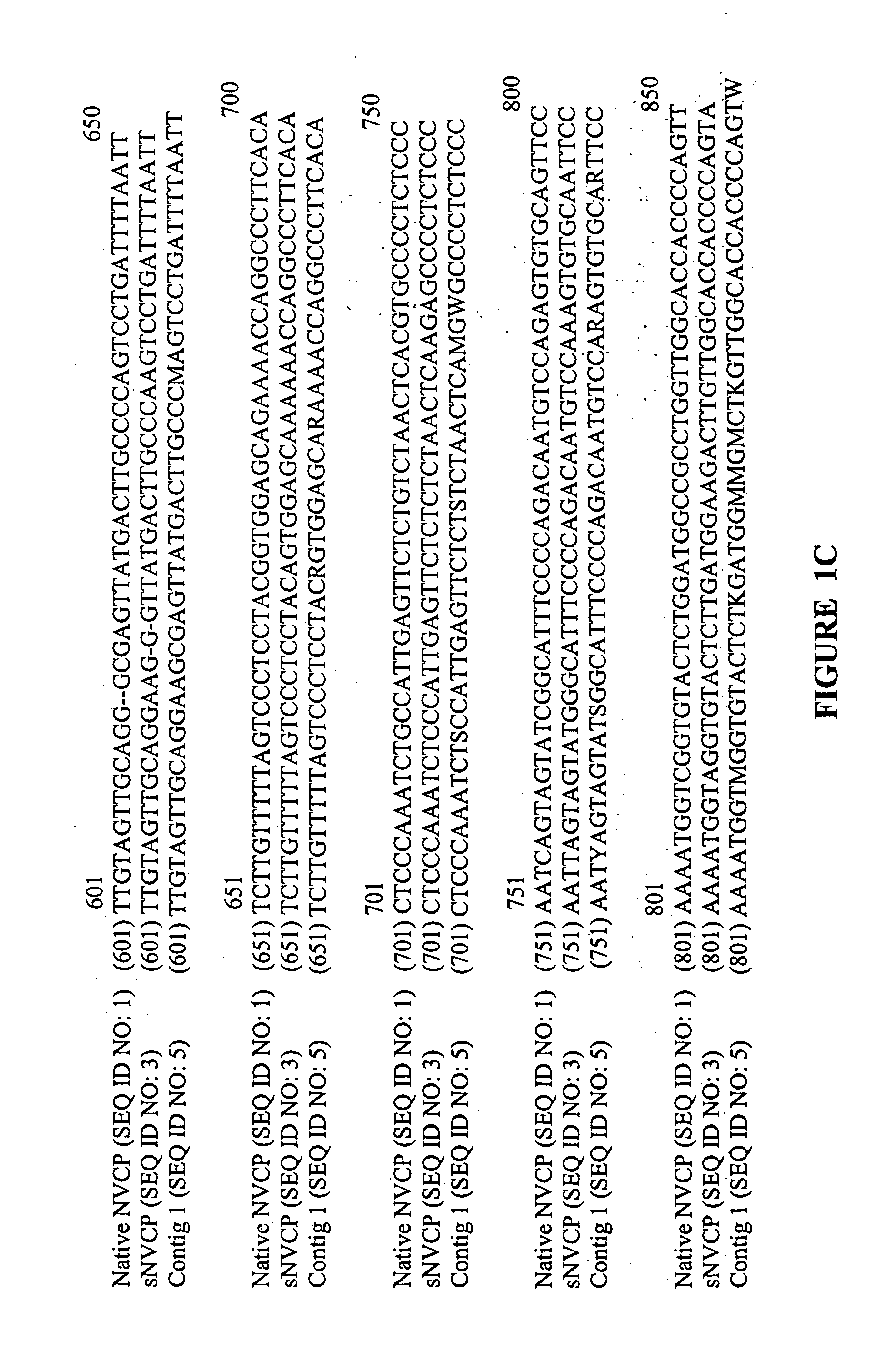Vectors and methods for immunization against Norwalk virus using transgenic plants
- Summary
- Abstract
- Description
- Claims
- Application Information
AI Technical Summary
Benefits of technology
Problems solved by technology
Method used
Image
Examples
example 1
Plant-Optimized Norwalk Virus Capsid Protein Gene
[0082] The coding sequence of the NVCP gene of Norwalk Virus (Genbank accession number M87661-genome for Norwalk Virus; or AAB50466 specifically for the NV capsid protein, which is hereby incorporated by reference in its entirety) was analyzed for codon use, and for the presence of undesired sequence motifs that could mediate spurious mRNA processing and instability, or methylation of genomic DNA. A plant-optimized coding sequence was designed with hybrid codon preference reflecting dicotyledon plant codon usage. A comparison of the “plant-optimized” and native sequences for NVCP is provided in FIGS. 1A-H. The optimized sequence was divided into a series of overlapping oligonucleotides of approximately 40-50 bases in length. The series of oligonucleotides were produced by a commercial supplier. The gene was assembled by overlap extension PCR. The gene was cloned into a commercial cloning vector and verified by DNA sequencing by the d...
example 2
Construction of Plant Expression Plasmid with NVCP Gene
[0089] The first stage of producing the oral transgenic Norwalk virus vaccine of the present invention was to insert the plant-optimized NVCP gene into a plasmid vector in such a way that the gene could be produced in the desired plant host. The plasmid pNVCP3, containing the plant-optimized NVCP gene having SEQ ID NO: 3, in an XbaI / SacI fragment, was selected for expression in a tomato and potato plants. The binary vector plasmid, pPS 1, containing the NptII gene, a CaMV 35S promoter, TEV 5′ UTR, and vspB 3 (vegetative storage protein beta terminator) sequence was obtained by ligating the expression cassette on a HindIII / EcoRI fragment into pGPTV-Kan (Becker et al., “New Plant Binary Vectors with Selectable Markers Located Proximal to the Left T-DNA Border,”Plant Mol. Biol. 20: 1195-1197 (1992), which is hereby incorporated by reference in its entirety). The CaMV 35S promoter was chosen because it is a constitutive promoter th...
example 3
Plasmid Transfer to Agrobacterium and Plant Transformation
[0094] The next stage was to transfer the binary plasmid vector to the bacterium Agrobacterium tumefaciens. This bacterium was then used to inoculate plant cells and transfer the psNV110 gene flanked by T-DNA borders to the plant. Plasmids pNV110 and psNV110 were electroporated into Agrobacterium tumefaciens strain LBA4404 and kanamycin-resistant colonies were screened by PCR and confirmed by restriction enzyme digestion. Plasmid prepared from transformed Agrobacterium lines was characterized by restriction digestion and compared to the plasmid prepared from E. coli DH5α to confirm the presence of psNV110.
[0095] Tomato (Lycopersicon esculentum variety “TA234”) and potato (Solanum tuberosum L. cv Desiree) were used as hosts for genetic transformation by Agrobacterium tumefaciens containing psNV110 and pNV110. Transformations were carried out by modified stem or leaf-disc co-cultivation methods. An Agrobacterium streaked LB-k...
PUM
| Property | Measurement | Unit |
|---|---|---|
| Conformational barrier | aaaaa | aaaaa |
Abstract
Description
Claims
Application Information
 Login to View More
Login to View More - R&D
- Intellectual Property
- Life Sciences
- Materials
- Tech Scout
- Unparalleled Data Quality
- Higher Quality Content
- 60% Fewer Hallucinations
Browse by: Latest US Patents, China's latest patents, Technical Efficacy Thesaurus, Application Domain, Technology Topic, Popular Technical Reports.
© 2025 PatSnap. All rights reserved.Legal|Privacy policy|Modern Slavery Act Transparency Statement|Sitemap|About US| Contact US: help@patsnap.com



